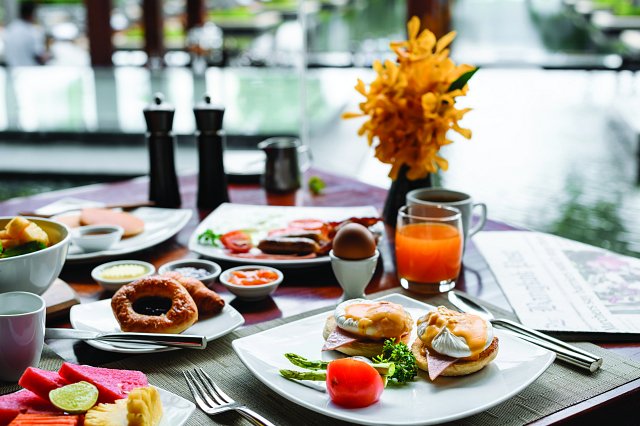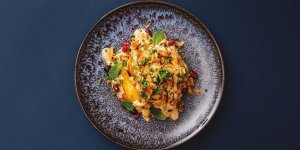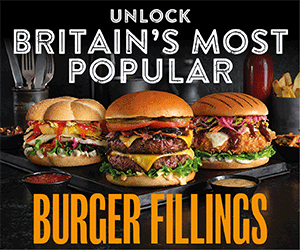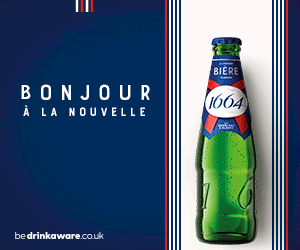Feature: Thanks a brunch!

Whether your customers are partial to a healthy or hearty morning meal, it’s down to you to ensure your F&B offering provides the perfect fuel for their day
Morning is one of the busiest times of day for restaurant operators. The global market size is mega, valued at US$398.1bn in 2020, and projected to reach US$729.5bn by 2030 – a compound annual growth rate of 6.3%.
Further research by procurement firm Beacon found that Brits spend £76m every year on eating breakfast out-of-home (OOH), with one in three heading to their favourite on-trade venue for the first meal of the day at least
once a week.
“Historically, morning trade is the most profitable service period in the restaurant industry,” explains hospitality expert Steve Humpherson. Until last year, Humpherson served as operations and project manager at The Londoner, working as head of operational excellence at The Edwardian Hotel Group prior to that. Now, he is the founder and MD of the hospitality agency CENSE. “But, as with any service period, there are multiple factors which they need to get right, including the concept itself, menu variety, service delivery and ambience.”
Menu magic
Those looking to make the most of morning footfall should provide a mix of sweet and savoury options. But, although consumers like to treat themselves, health is still very much on the
radar – something operators must keep in mind when constructing their morning menus. When it comes to bread products, for example, high fibre varieties such as wholegrain, seeded and bran are a must, giving customers a choice depending on what suits them best. “While cooked breakfast is certainly still popular, luckily for operators, the trends have swung towards high-margin and low-labour items, which include mueslis, porridges and egg dishes,” says Humpherson. With the cost of living crisis now impacting every demographic, the demand for cost-conscious items will continue to rise, so it’s key for restaurateurs to ensure they have affordable choices available to those on a tight budget.
That said, premium menu items are still greatly sought-after in the OOH breakfast market. In recent years, high-cost products such as avocados, smoked salmon and artisan breads have been top priority among consumers, and restaurants that offer such items are justified in charging more, resulting in healthy profit from the first service of the day.
Bed & breakfast
Hotels are particularly well placed to cash in on the booming demand for breakfast. As Ronan Hunter, general manager of The Castle at Taunton and director of the hotel’s in-house restaurant Brazz, explains, the nature of morning service in the venue changes day to day. “We have a buffet offering for our residents,” he says. “Through the week, our corporate guests, who may be travelling regularly, tend to limit the amount they eat and resist the temptation to pile their plates high. At the weekend, leisure guests tend to be slightly more relaxed about the type and quantity of breakfast consumed.”
With non-residents, adds Hunter, it makes financial sense to welcome them in and stay open all morning. After all, the additional costs of offering hot drinks, pastries, cakes and the like are minimal.
The ability to simultaneously offer hot and cold buffet selections is a boon for hotel restaurants, allowing staff to increase or decrease the available portions based on levels of occupancy and giving operators greater control over the venue’s waste output.
“During my time at Edwardian Hotels London, we offered a very high-quality breakfast buffet for those who wanted an all-inclusive experience,” says Humpherson. “This included both hot and cold morning items, as well as unlimited hot drinks and juice, and was available for in-house guests, walk-in diners and reservations.”
Within both the hot and cold options there was a multitude of choice, he adds. Cold included three to four fresh fruit selections, four types of yoghurt with six to eight DIY toppings, four to six types of cereal, and a selection of breads, cheeses, meats and juices. Along with the traditional full English components, those opting for hot could choose eggs cooked any way – including omelettes with various fillings. The restaurant also offered a range of individually priced a la carte options, ensuring the offering was inclusive to all dietary requirements and preferences. “Regardless of which offering guests went for, we always provided the very best quality produce alongside great and efficient service in a relaxed and comfortable setting. Fall short on quality of produce, service or value for money and it will linger with your guest for the rest of their day and hinder future returning business,” Humpherson emphasises.
The brunch bunch
Late morning brunches have blossomed in recent years, presenting a big opportunity for savvy restaurateurs. A big reason OOH brunch continues to rise in popularity is its flexibility – not only in terms of its serving time, but also its offering.
“Brunch can be anything you want it to be,” says Kevin Hughes, country manager UK&I for La Lorraine Bakery Group, which includes the Panesco brand. “This allows eating out
establishments to create their own unique offering while providing dishes that will return the biggest profit.”

How d'ya like your eggs in the morning?
There’s also a social element to the boom of the brunch. In the wake of Covid-19, food and socialising have become a necessary outlet after two years in lockdown, deprived of human connection. “As caterers, it’s important to tap into this demand by innovating and developing new products and recipes that fit well as a brunch time offering,” adds Hughes.
The social aspect is part of what makes the brunch an ideal weekend offer. The bottomless brunch is a natural fit, with food, booze and socialising equally placed on the agenda. As a result, it gives operators the chance to curate experiences which, in many cases, are not only fully booked but also paid in advance.
“Most operators tend to charge around £30+ for the additional upsell of free-flowing booze, and using a set price package really helps drive a ‘golden weekend’ period for restaurateurs,” Humpherson explains.
Hunter says the brunch menu at The Castle is hugely popular on Saturdays and during holiday periods. “We put it in place last year when the first whisperings of a cost of living crisis were happening,” he says. “We are able to offer excellent value for money with our brunch offering and have it available until 3pm. Again, as we are already preparing and offering many of the dishes as part of our normal residents’ breakfast, it works for us and actually helps us reduce food waste.”
Workin’ 9 to 5
The work from home revolution, driven by the pandemic, has massively influenced the on-trade breakfast market over the last few years – something witnessed by Hunter and the team at The Castle. “With increasing numbers of people working from home, morning coffee or dining from a brunch menu allows people that chance to get out of the home office for a short while,” he notes. “Generally, a restaurant should be able to deliver better than they can prepare at home, and that’s what we aim to deliver. People are joining us in the mornings and plugging in their laptops so they can make use of our heating, lighting and WiFi. Again, these are costs we would still be incurring anyway, so we’re very happy to facilitate.” And isn’t that what hospitality is all about – the creation and maintenance of inviting spaces that can provide respite, support and sustenance to those in need? Humpherson agrees, adding: “There’s a huge demand for Zoom-friendly dining options. Those still working from home may wish to have breakfast and attend video calls from a neighbourhood eatery, so high-speed WiFi, ease of access and ‘quiet zones’ are highly desirable. So too are venues that are openly welcoming for long-term visits (4+ hours) while customers see to their morning business.”
On-the-go
Venues operating in city centres or within transport hubs, such as train or bus stations, are particularly well placed to capitalise on the morning rush, which can ultimately generate a significant percentage of overall sales.
“For restaurant operators, breakfast trade is often driven by products that can be conveniently eaten on the move,” says Scott Duncan, managing director of commercial oven company Unox. “Consumers don’t want to be left waiting for their breakfast, but at the same time, operators don’t want to be compromising on quality to meet the speed requirements.”
Customers will therefore decide which restaurant to visit based on how much time they have and what kind of experience they’re after. In commuter hotspots, speed and consistency will always be important, which is why grab-and-go products such as sandwiches, croissants and other baked goods sell so well. With high-quality freeze-and-thaw items available to buy in bulk, plus the ability of such items to be easily heated, packaged and then easily carried by consumers, such goods are a must for operators looking to rake in morning trade.
Gold standard
Regardless of how you choose to balance the hot, cold, to-go or dine-in morning options on your menu, customers will be expecting top-notch quality. “We aim to provide value through the quality of our offerings, using the same level and provenance of ingredients that we do throughout the business,” says Hunter. “As we have daily resident breakfasts, we are able to achieve very competitive prices for the things we offer throughout the morning. We are able to pass these savings onto our guests, ensuring they receive what they perceive to be value for money. The goal is to offer the same service levels whether it be morning, noon or night, delivered by a trained and passionate team.”
Customers who are less price-conscious will be willing to splash out, but you best believe they’ll be expecting unparalleled produce and even better service in return. But remember – many a consumer’s morning will be fuelled by hot drinks, so don’t let your beverages let your venue down. As Ali Anderson, sales manager at Notes Coffee Roasters, explains: “Make sure the quality of your hot beverages offer matches that of your food offer. Too many restaurants focus on their food but then think it’s OK to pair premium breakfast or brunch menus with a regular cup of tea or coffee. Consumers’ tastes have moved on from that. If you’re taking the time to prepare an enticing breakfast menu, then do your research with hot beverages too.”
On the beverage side, the industry is seeing a surge in sales of premium hot drinks. This has been the case with coffee for many years, with 15% of all coffee served OOH falling within the speciality bracket – and further growth predicted still. But it’s the same situation with tea, with new flavours, boutique brands and speciality brands coming to the fore.
So, there you have it – a fail-safe checklist for nailing morning trade: offer a varied and inclusive menu that includes takeaway options, think about venturing into brunch if you haven’t already, ensure speed of service along with consistency and value for money, and champion taste and quality above all else.
As Duncan concludes: “The most important element to generating a successful and profitable breakfast offering is quality. Customers are looking for delicious food, served quickly and suitable for eating on the go. Without quality, operators will not generate the repeat business they need to get the most from their offering.”











